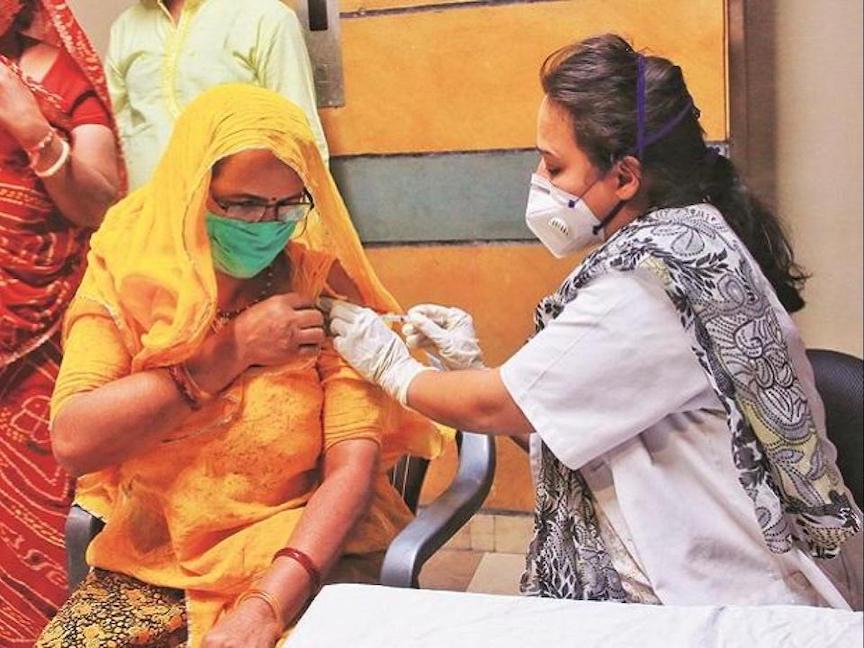India came under the International spotlight during the second wave of the pandemic, showcasing to the world the catastrophic impacts of its ill-preparedness. However much of this focus was on the crisis in urban India, where we will never forget the grim scenes of footage showing people scrambling for oxygen, fighting for hospital beds and burning bodies in vacant land blocks.
However, the situation was just as bad, if not worse, in some parts of rural India where the already sparse health infrastructure struggled to cope with the increased demands and urgency placed upon it by this latest turn of events.
Underserviced, remote and isolated areas of the country have presented a challenge throughout the pandemic and in order to combat its spread and impact, there has been a need to ‘think outside the box’, collaborate with local people, government and other service providers and harness the power of digital to engage.
To protect rural India, the following measures have proved effective:
1. Harnessing Community Leaders
With many people led institutions in place on the ground (farmer producer companies, women’s federations, and SHGs among others), organisations seeking to help, could quickly reach out to community members with information by creating a Single Point of Contact (SPOC) in each community. By choosing one or two people who could relay information to their communities, CSR departments could swiftly disseminate education to help curb the impact of COVID-19, and promote the benefits of vaccination. This reinforced the fact that enabling local people to play a crucial role in addressing local problems is paramount. A cadre of local leaders stands strong long after external facilitators has left a community. By investing in grassroots people, one could rely on them at the ‘coal face’ and know that they could and would ‘get the job done.’
2. Going Digital
The pandemic taught us that ‘face to face’ is no longer a necessity. Those CSR arms that were swift to transition to digital modes of connecting, and supported their communities to follow suit, were able to stay ahead of the curve. By creating local language mobile messages and videos, information could be tailored to their needs and delivered directly to them via WhatsApp groups. Today there are also incredible grassroots stories of on-ground health workers taking to mobile phones and tools like flipbooks to educate their communities, farmers meeting regularly via zoom and google meet, and youth turning to tablets to continue in their skill training and studies – all because of the agility of CSR departments in going digital and taking their communities with them.
3. Provide Healthcare Support
By mapping health services in remote areas, CSR facilitators could identify service gaps and requirements where they could play a role. Whether it be providing information about testing, quarantine and treatment centres, supplying medical infrastructure or supporting vaccination centres with facilities (tents, drinking water stations, seating, transport) – those CSR bodies that sought to identify gaps and meet those needs, played a crucial community role. Particularly in rural areas, there was a strategic role to be played during the second wave for collaborating with other like-minded organizations who are ready to support in providing oxygen concentrators or cylinders. By uniting to raise funds and procure oxygen equipment to fulfill the urgent need in rural communities CSR departments could plug key gaps in the provision of healthcare support.
4. Value-Adding Government Drives
The rollout of the vaccination drive by the Government across the country has been a gargantuan task and it presented key opportunities to supportive stakeholders to play a role in value-addition. With so many myths surrounding the vaccine, there has been a need to educate communities on the benefits of vaccination. Additionally, there has been a need to ‘bridge the gap’ – literally helping rural communities register for the vaccine, access transportation to vaccination centres and supporting them post-vaccination with any after-effects and ensure the second dosage. Penetration of vaccination can never be a blanket in a vast country like India, and so CSR bodies can play a role in supporting remote villagers to access vaccination in larger centres. Here, local leaders can play a crucial role as well in advocating on the ground.
5. Investing in Livelihood Creation
Whilst COVID-19 itself created a set of health-related challenges, the fallout of the pandemic was the loss of livelihood which crippled families and communities. By supporting SHGs and local women to make masks or grow kitchen gardens and sell vegetables, those stakeholders who helped build the self-reliance of people via livelihoods saw an immediate impact. With the severe shortage of cash in communities, support in applying for COVID-19 Sahay loans or setting up Community Funds (managed by people’s institutions) to help people avail of Interest-free cash loans also provided relief.
6. Adopting Agility
The swiftness of the national lockdown forced the entire sector into a new way of operating. There was a need to reinvent ways of doing things and to roll out new initiatives to meet the emerging needs on the ground in the light of this national disaster. Those CSR arms who could pivot quickly and with agility could make a bigger impact and, more importantly, garner the trust of the community by being there for them in their hour of need. Those who failed to do so missed a crucial opportunity to help, make a difference and foster deep community relationships.
The challenge of controlling the pandemic in the rural parts of the country has been immense. But those who live and work there know that this is where the need is often the greatest. Rural people who are already on the brink of poverty and who live in isolated communities with few services, cannot and should not be forgotten in times of crisis when the largely urban-based media choose to shine their light on primarily urban problems.
Pearl Tiwari is the Director of Ambuja Cement Foundation, the CSR wing of Ambuja Cements Limited. In a professional career spanning over 30 years, Pearl has been associated with the not-for-profit, educational and corporate sectors. Pearl joined Ambuja in 2000 and ever since has been at the helm of nurturing the Ambuja Cement Foundation that has expanded from a fledgeling team to nearly 400 development professionals, with a pan-India presence active in 21 locations across 11 states.
Views of the author are personal and do not necessarily represent the website’s views.



